Durability and durability of the house depends on its foundation - foundation. Since this part of the building is in direct contact with the ground and groundwater, it needs high-quality protection against destruction. There are many ways to protect the concrete structure from the negative impact of moisture, chemical compounds and underground moving. One of the most efficient and at the same time inexpensive is the Bituminous Waterproofing of the foundation. About what we will tell about this article.
Content
Features of waterproofing foundations
The foundation, even if it costs under a small construction, assumes a colossal load, to which the pressure of the soil is adopted. In most cases, a tape or monolithic type is chosen for capital buildings, but one way or another it is necessary to make thorough waterproofing. It protects against destruction not only concrete visited outside the foundation, but also fittings inside, which is responsible for the rigidity of the entire design. If it starts rust, the foundation will simply have a lot.
If the waterproofing is low-quality (there is no no longer talking about it), underground or sedimentary water will quickly imbued through the porous structure of concrete and damage the metal frame. As a result, the base will not be able to withstand the load from the walls, overlaps and roofs, and the house in the literal sense will begin to crack along the seams.
Regardless of the selected method of waterproofing, some preparatory work must be performed:
- It is possible to find out at what depth on the construction site are groundwater (the type of waterproofing, the choice of materials and the thickness of the application depends on this).
- Take into account the possibility of flooding the site, especially if it is located in a lowland or on a brine.
- Determine the degree of soil bunch (on the bunched soils, the foundation requires additional strengthening, otherwise the earth will simply pouches the house, or it turns out).
- The operating conditions of the future building (if you build a warehouse, the waterproofing should be maximum).
- Financial capabilities (fortunately, the price of waterproofing the foundation of the bitumen mastic is not too high, regardless of the amount of work).
Methods of waterproofing foundation
There are only two types of waterproofing foundations: vertical and horizontal. In the first case, the walls of the foundation take place with rolled materials. This work is relevant both in the construction of the house and after putting it into operation.
Horizontal waterproofing is carried out during the construction of the house, and this work takes about 10-17 days. The process involves not only the processing of the base with waterproofing material, but also the laying of the so-called Drainage pillow from sand, rubble and gravel. Drainage is required in all cases, especially if the soil waters run near the surface.
The option of waterproofing the foundation, shown in the figure above, is best suited for protecting the belt and monolithic base. In the case of a monolithic type, experts recommend using combined insulation, combining vertical and horizontal methods. However, if only horizontal is selected, it is best to use roller-bitumen materials or liquid rubber, since they securely protect the joints and the slots between the elements.
Bituminous waterproofing
As we have already mentioned above, the waterproofing of the foundation of the bitumen mastic is one of the most cheapest and at the same time qualitative ways of protection. For this, special mixtures are used on a bitumen basis, which contains organic and inorganic components, plasticizers and all sorts of additives to improve operational characteristics.
All bitumen derivatives for these purposes are distinguished by elasticity, good moisture protection indicators and low cost. They are used not only for processing porous concrete, but also brick masonry and plastered surfaces. Such waterproofing copes with sharp temperature differences, high soil pressure and aggressive impact of groundwater. There are separate types of bitumen mastic containing special additives that allow them to protect the foundation even with extremely low or high temperatures. For working with foundations, experts advise to give preference to bitumen and bitumen-polymer mixtures, since they are deprived of the shortcomings of purely bitumen compositions and are distinguished by enviable durability.
The advantages of bitumen mastic for waterproofing foundations include the simplicity of their application. To do this, you will not need any special equipment - only roller, a spatula or a wide brush, as well as enough time. With work you can easily handle alone. Also convincing argument in favor of bitumen compositions is their affordable cost and a wide choice.
However, there is its shortcomings in bitumen waterproofing, some of which can be attributed to the specifics of use. For example, the application rate is not as fast as in the case with rolled or sprayed materials, especially if we take into account that the mastic must be smeared in several layers after the complete drying of the previous one. At all inexpensive mixtures have a mediocre hydrostility and are not able to provide 100% protection against leaks. The durability of waterproofing also depends on the selected material brand. Usually such protection serves as a minimum of 5-10 years, after which it will be necessary to re-process the base.
On average, the cost of building the foundation is 15-20% of the price of building the whole house. A fair part of money takes place for waterproofing, so choosing bitumen mastic for this purpose, it is possible to minimize costs. But at the same time it is important to perform work very high quality, otherwise the error correction will be spent much more than a large amount.
Depending on the selected mastic, waterproofing may consist of one or more layers. It is applied in most cases only outside, but if the house is planned to do a basement, it is better to treat his walls and from the inside to protect against the penetration of capillary fluid.
Materials for improving waterproofing
With any method of waterproofing - horizontal or vertical - you can use the compositions on a bitumen basis. Due to its operational qualities (temperature resistance, protection against ultraviolet, ease of application, low price) Mastic is considered a reliable and affordable material. You can deceive it the foundation from all sides, and then consolidate the effect, setting over the roll products.
Choosing mastic for processing the foundation, should not forget that it contains toxic substances. Therefore, before work, you should take care of personal security - to wear a respirator and gloves at least. Also, bitumen mastics are pretty firewood, so you should not know the fire for heating the composition near the workplace. And if you cover the walls of the basement from the inside, be sure to take care of high-quality ventilation room - so you eliminate the risk of toxic evaporation poisoning and accelerate the dryproofing.
The market presents a huge variety of compositions from various manufacturers, domestic and foreign. Special location has deserved bitumen waterproofing for the foundations Aquamast:
But whatever the company you choose, in any case the price will not be too high. Specialists are recommended to give preference to mastic mixtures with the addition of polymers. They are distinguished by high plasticity, good adhesion with concrete and brick, as well as a wide temperature range.
It should be taken into account that there are different compositions for exterior and internal works. So, if you intend to treat the walls of the basement or foundation from within, where there is no full ventilation, it is better to choose a water-based mixture. They do not contain toxic solvents, as in mastic for external work, so that they have a neutral smell and dry quickly. However, the temperature regime suitable for work will be limited - with such compositions you can work in rooms with air temperature above + 5c.
When choosing bitumen mastic for the foundation, the following factors should be taken into account:
- air temperature;
- humidity level;
- surface area to be processed;
- loads that will affect the treated surface in the future;
- financial opportunities;
- place of work (inside or outside).
After that, you can make the estimate and correctly select the desired composition.
Methods for applying bitumen waterproofing
There are two ways to apply bitumen mastics to the surface - hot and cold. From the point of view of economic benefits, the optimal solution will be the use of hot bitumen. This is, by the way, and the oldest and proven method. However, it assumes the presence of special heating equipment, but the builders of the wilderness often cost the usual fire, as will be shown in the video below. Such mastic is sold in metal barrels, which must be heated before use so that the viscous composition becomes more supple and elastic, otherwise it will be impossible to evenly apply to the surface. One of the main advantages of the hot way is the possibility of work even at negative temperatures.
"Cold" mastic are in their composition organic solvents. Today it is the most common way, since it is only necessary to buy the required number of barrels, open, mix and proceed to work. With a modest budget, it is possible to limit the simple bitumen mastic, and if finances allow, it is better to choose compounds with polymer and latex additives. The latter are more elastic, have high protective characteristics and durability. Work with a cold way can also pass under negative temperatures, but only if the corresponding mastic is selected. Simple bitumen formulations will quickly stick in the cold, and it is quite uncomfortable to work with them without heating.
Working with any mastic is pretty simple and consists of several stages:
- At first it is necessary to prepare the surface of the foundation, clearing it from pollution, signs of corrosion, various spots. If necessary, you need to sharpen the cracks with cement-sandy solution and, if possible, align the surface.
- Despite the high adhesive indicators, before applying bitumen mastic, it is recommended to cover the foundation of a more liquid moisture protection composition. Very good in this role has proven penetrating waterproofing. The essence of its impact is reduced to the fact that the smallest polymeric granules penetrate into the porous surface of concrete or brick, where they are frozen and convert into solid insoluble crystals. They are filled with all microcracks and pores, creating reliable protection against leaks and grinding material (make the basis stronger).
- After drying the adhesion primer, you can start applying bitumen mastic. Usually, waterproofing consists of 2-4 layers. Each subsequent layer is applied after drying the previous one.
- The surface is left to dry in a natural way. If it happens in a closed space, you should provide good ventilation.
- After drying the foundation outside the ground, the earth falls asleep or conduct an exterior decoration of the base.
This is the principle of operation in general terms, but it should be understood that cold and hot compositions have their own specifics. If you decide to use tested hot bitumen mastic, first you need to clean the surface of the foundation with a metal brush to remove dust and contamination from microcracks. If there are potholes or large cracks, they need to be seen by concrete, wait for drying and apply primer. After a couple of hours, you can cover all the mastic, pre-warmed it on a water or steam bath. In the process of heating, mastic must be continuously stirred by a wooden stick or a building mixer so that the consistency is homogeneous. After the composition becomes elastic and more liquid, it is easy to apply on the wall with a roller, a spatula or a wide painting brush. Watch that there are no rejected places. When the first layer is driving, repeat the procedure. It is necessary to control the thickness of each layer and ensure that it does not exceed 6-8 mm.
Below on video - bituminous waterproofing of the foundation with special mastic, for heating which a conventional bonfire was used:
With cold bitumen masts, it is much easier to work and faster, but they are somewhat more expensive. This is explained by the presence of plasticizers in the composition allowing the mixture to remain liquid and elastic. The only inconvenience of using such mastics is that they need careful preparation of the foundation - from the surface you need to eliminate all the dust and dirt, dry and degrease it. In particular, this applies to the use of simple bitumen compositions. More expensive bitumen-latex and bitumen-emulsion mixtures are not so demanding towards high-quality base preparation. Polymer compositions must be applied at least 2 layers, waiting for the previous one. Hurry in this case is inappropriate, because if it does not wait for a complete secretion of the lower layer and immediately smear the foundation on a new one, the insulation simply sucks, and all efforts will come to no.
Useful advice: To check, the drying layer is silent or not, slightly push to the surface with your finger - if it stopped being lime, it means that you can continue to work.
Make bitumen waterproofing of the foundation with your own hands is quite simple, if you adhere to the instructions and know the secrets of handling certain compositions. We hope this article will help you to build a house on a high-quality and durable basis, immunity to the destructive impact of moisture.

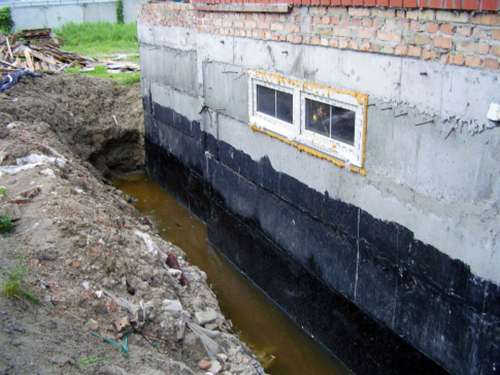
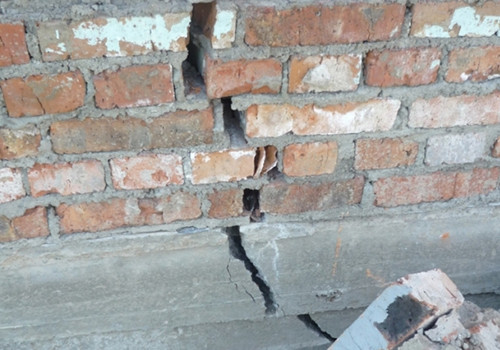
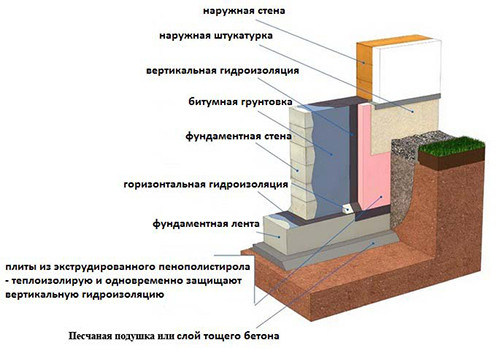
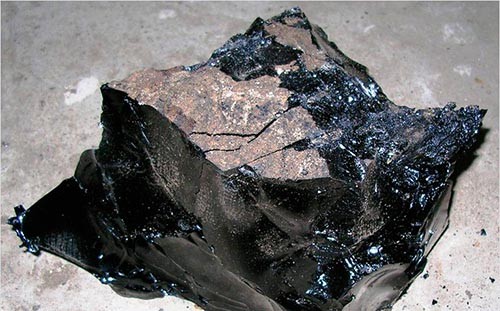



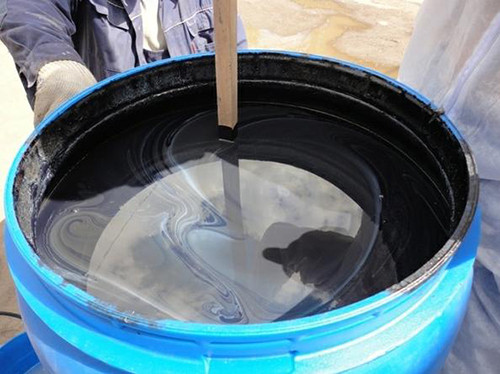
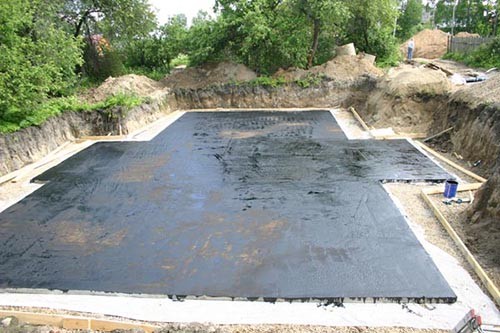


















http: //xn--ptbbsblgi.xn--p1ai/stroy-montage.php. Construction works